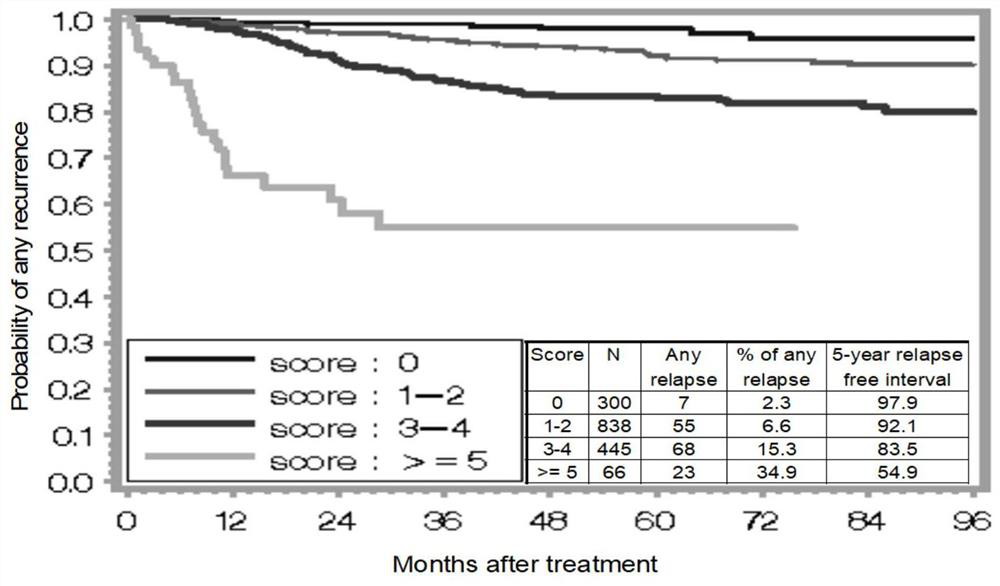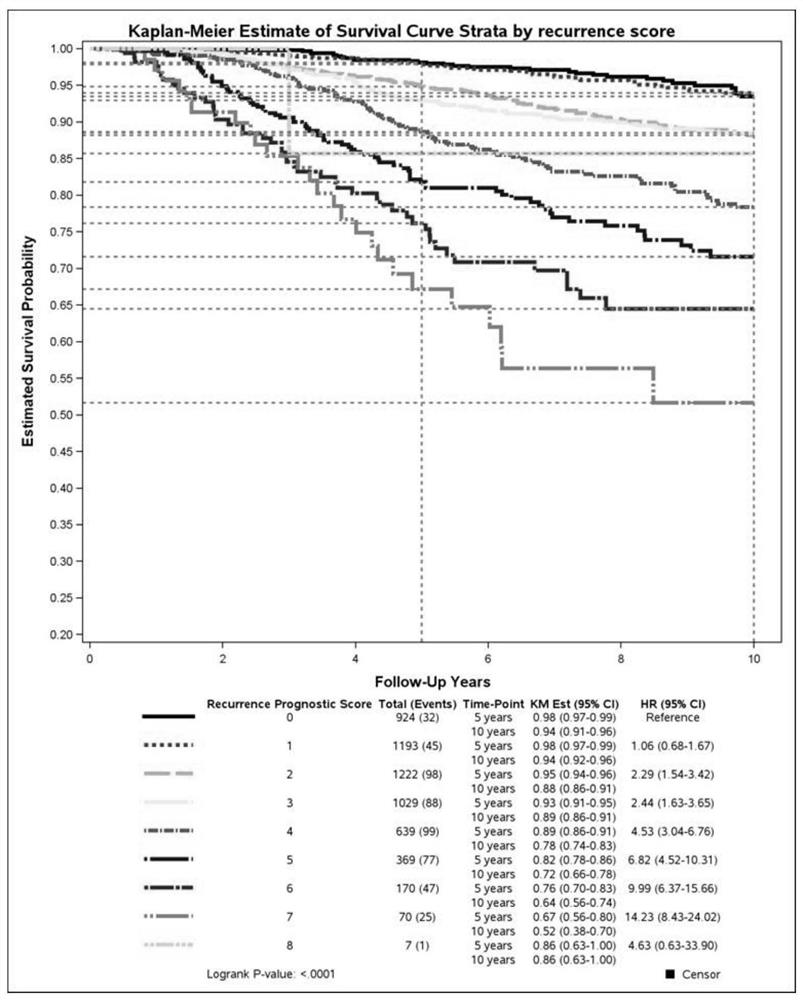Polygene detection primers for predicting risk of distant recurrence of early breast cancer
A technology for detecting primers and multiple genes, which is applied in the determination/inspection of microorganisms, biochemical equipment and methods, DNA/RNA fragments, etc. It can solve the problems that the sensitivity and specificity of the test system have not been effectively verified, and achieve enhanced detection Good sensitivity and primer specificity
- Summary
- Abstract
- Description
- Claims
- Application Information
AI Technical Summary
Problems solved by technology
Method used
Image
Examples
Embodiment 1
[0056] A method for predicting the risk of distant recurrence in early breast cancer (Clinical Variable Model 6 (CV6))
[0057] Based on 1010 patients treated in our hospital from 1990 to 2001, a prognostic scoring system for Local-Regional Recurrence (LRR) after mastectomy was established in 2006. This prognostic scoring system has been validated on the basis of 1545 patients treated in 2013 at the same hospital during 2002-2007. Subsequently, patients (n=1649) who did not undergo mastectomy (Post-Mastectomy, PMRT) in these two studies were combined, and a multivariate analysis was performed on the risk of 5-year LRR (see Table 1).
[0058] Table 1 Multivariate analysis of 5-year LRR risk in non-PMRT patients (n=1649)
[0059] Variables Hazard ratio 95%CI Age ≤40 1.9 1.1-3.0 >40 1.0 ER status Negative 1.8 1.1-2.9 Positive 1.0 LN positive 0 1.0 1–3 2.9 1.8-4.7 4–9 6.7 2.0-23 >9 16.4 7.2-37 ...
Embodiment 2
[0068] 1. A method for predicting the risk of distant recurrence of early breast cancer
[0069] S1: FFPE tumor tissue samples collected through standard medical sample collection procedures;
[0070] A total of 168 patients with stage I-III breast cancer (among them, 112 patients in the training group and 56 patients in the test group), excluded patients who received chemotherapy before surgery and distant metastases. FFPE tumor tissues were obtained from patients treated in our hospital between 2005 and 2015.
[0071] S2: Utilize RT-PCR technology to detect the relative expression of the polygene described in claim 2;
[0072] S21: RNA extraction from FFPE tumor tissue
[0073] Each archived FFPE tissue sample was cut into 10 μm thick sections and stored or shipped at 4 °C. According to the instructions of RNeasy FFPE kit (Qiagen, CA, USA), the paraffin was removed, total RNA was extracted from FFPE tissue sections, treated with DNase, and then stored at -80°C for later u...
PUM
 Login to View More
Login to View More Abstract
Description
Claims
Application Information
 Login to View More
Login to View More - R&D
- Intellectual Property
- Life Sciences
- Materials
- Tech Scout
- Unparalleled Data Quality
- Higher Quality Content
- 60% Fewer Hallucinations
Browse by: Latest US Patents, China's latest patents, Technical Efficacy Thesaurus, Application Domain, Technology Topic, Popular Technical Reports.
© 2025 PatSnap. All rights reserved.Legal|Privacy policy|Modern Slavery Act Transparency Statement|Sitemap|About US| Contact US: help@patsnap.com



